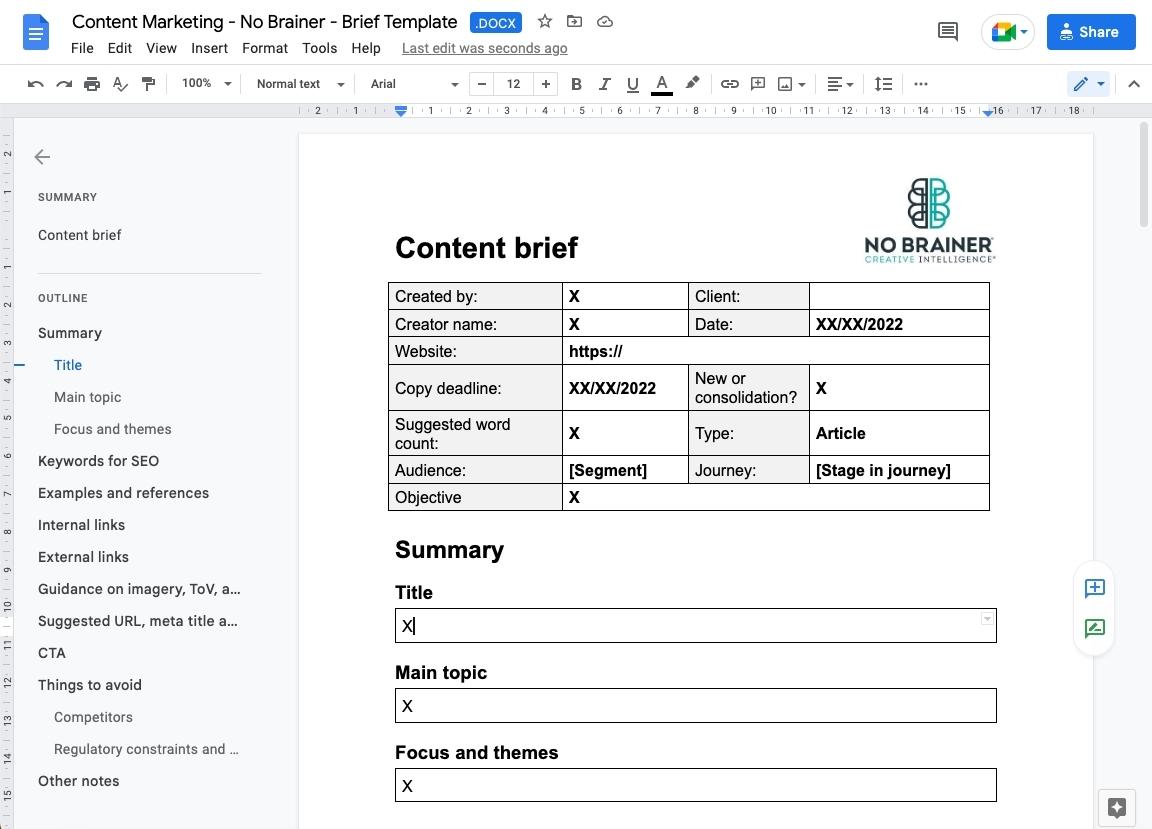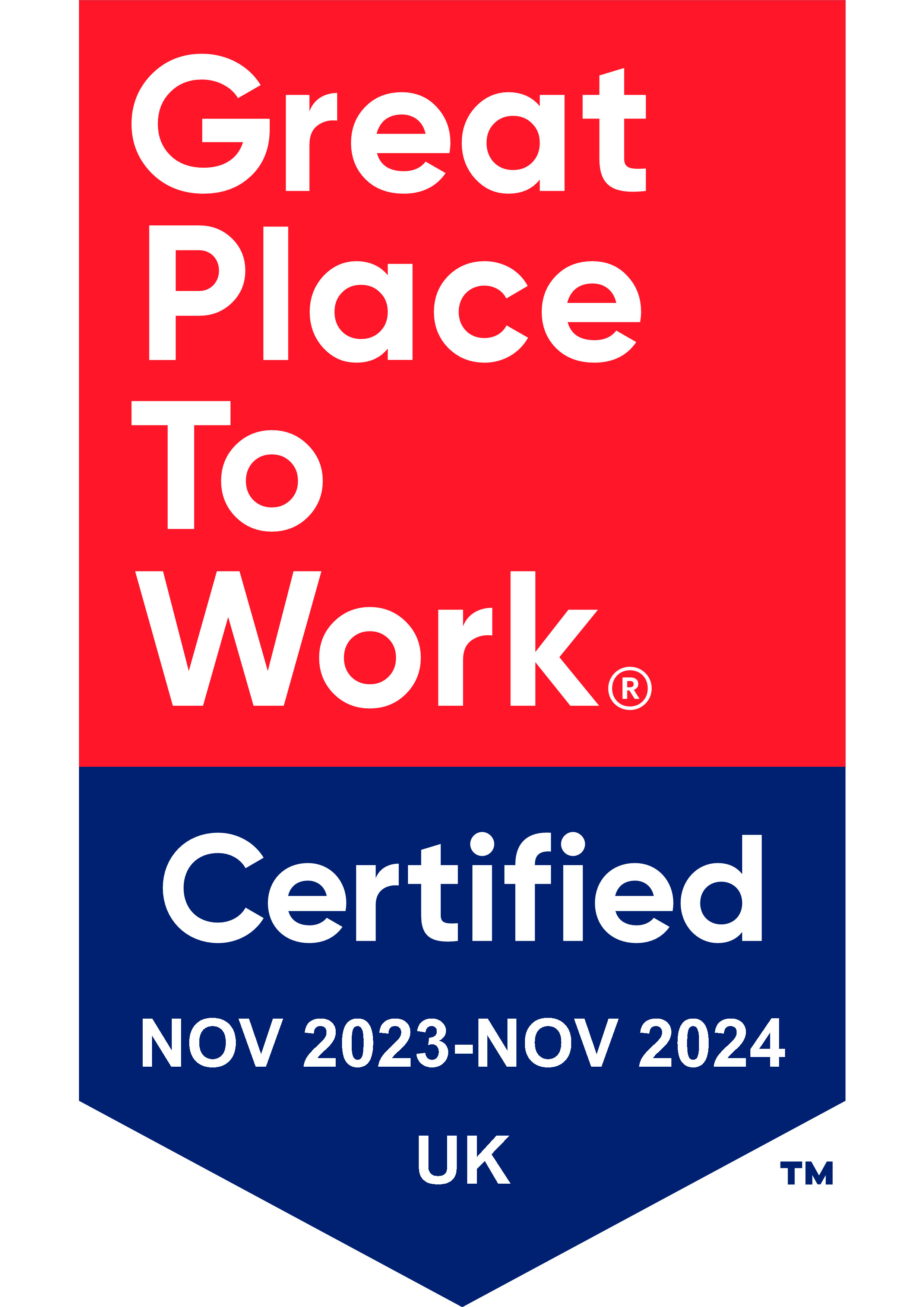Delegating content creation to others, whether it’s the in-house team or outsourced elsewhere, can sometimes be a frustrating experience – often going back and forth until the content you want/need has been brought to life.
It’s time consuming and not really in anyone’s best interests. Whether it’s written content, videos, graphics or ad copy, how you communicate what you want the end product to be plays a huge role in the chances of getting it right first time.
We look at how to write a content brief that doesn’t take you an absolute age to do, but still effectively gets across all the information that the creator needs to deliver the piece you’re after first time. Yes, it is possible!
What we’ll cover:
- Is there a perfect content brief template?
- Universal content brief elements
- Other elements to include in a written content brief
- Other elements to include in a visual design brief
- Other elements to include in a video brief
- Free content brief template
Is there a perfect content brief template?
Unfortunately, there is no one-size-fits all content brief template that works for every kind of content and campaign.
There are so many variables and some fundamental differences between types of content and what the intended use is, that a content brief template that took all of these into consideration would be a dozen pages long and no one would be able to take it all in.
Content briefs shouldn’t take hours to put together every time, but there is some thought that needs to be put into exactly what the creator needs from you to be able to produce what you want. Ideally, a content brief shouldn’t be more than a couple of pages in length AT MOST.
With that in mind, it will usually make sense for you to develop a content brief template for each kind of content that you regularly need someone to create e.g. one for videos, one for infographics, one for blog posts, one for page content etc. There will be some crossover in the types of info that these briefs contain, but having dedicated templates is usually significantly quicker than trying to adapt a universal content brief template every time.
Universal content brief elements
Whatever the content type, the brief will need to have some vital information for the creator, so this needs to be included on any dedicated brief type too. It will involve answering questions such as:

What is the purpose of the content?
- What are the objectives?
- What do you want the audience to do after seeing/reading/hearing this content?
Who is it for?
- Who is the content aimed at?
- Is there persona information you can include in the brief?
- What point of their user journey are they at when you want them to consume this content?
What do you want the content to say?
- What story are you telling with it?
- Are there key messages that you want to put across?
- What one thing do you want the audience to remember about it?
Where will the content go?
- What platform(s) is the content going on e.g. social media or a company blog?
- Are there secondary uses that might have an impact on format e.g the primary use is a blog but will also be used on social and for an email newsletter?
Is there a set structure or layout needed for the intended purpose?
Some content might need to fit a specific set of dimensions, word count, dpi for images etc.
What is the call to action?
You already know the action you want the audience to perform after consuming the content but how do you want to do this e.g. ‘buy now’ button, ‘read more’ link, ‘sign up’ button etc?
Are their any existing templates you need to choose from, or if it’s something new – offer some inspiration and guidance to the creator on the type of call to action content that will nudge users on to the next part of the journey.
HubSpot have some great examples of CTA’s that work, or there’s the Content Marketing Institute, who’s also pulled together a list of CTA best practices and examples.
Are there brand guidelines?
Don’t assume that the creator knows anything about your brand, competitors or industry. If there are red lines then make sure you outline them and make it clear how the brand does things e.g.
- How the brand name is referred to within content
- The tone of voice of the brand
- How sources should be referenced within content
- How imagery should or should not be used
- Whether there are competitors that shouldn’t be mentioned or linked to
- Whether there are specific words or descriptors that are not permitted in the industry e.g. financial and health sectors are highly regulated in this area
- Details of brand colours, fonts, logo combinations etc.
Can you provide examples of similar content?
This is an unskippable step.
Even the most original idea has some inspiration from somewhere, and at the very least, providing some guidance as to the look and feel that you’re trying to achieve with the content is essential. Include screenshots as well as links to content and videos – anything that’s relevant!
Giving a writer, videographer or designer a completely open brief in this area generally isn’t doing them any favours at all. If there’s content already out there that contains some of the elements you want but not all, reviewing and highlighting this gives a great starting point for them to build on.
This makes it clear what you’re looking to achieve – and reduces the back-and-forth significantly.
Other elements to include in a written content brief
Assuming that the content will be optimised for search, so that people can easily find it when using search engines, you’ll want to ensure that the brief incorporates:
- Target keywords for SEO (preferably intent-led keywords), and where they should be included e.g. H1s, H2s or within text.
- Structure i.e., should it include a ‘contents’ list that drops down to the appropriate sections
- A target word count, even if just a range i.e., 1,500 words+ for in-depth articles and blogs, but for ecommerce products and service pages, it could be much less
- Any specific topics that you want to be included
- Any internal links that should be included, and the anchor text to be used
- Any external links to be included, and the anchor text of context for this
- Whether the page title and meta description also needs to be written, and what keywords these should include.
Other elements to include in a visual design brief
Some designers can also write content, but it’s not usual to expect every designer to be able to. So, you’ll not only need to provide guidance on the way that you want the design to look, you’ll also need to include:
- Any text you want including in the design. For example, if it’s an infographic, give them the exact stats you want to be incorporated (usually in Excel or Google Sheets format)
- The order that you want things to appear in
- Explain the key focus points i.e., is there a few stats you’d like to stand out more than others?
- Any footnotes or source information you need to be included at the bottom of the graphic
- Any info about the spec, such as the orientation, max length or dimensions
- The formats you want the visual delivered in e.g PNG, JPG etc.
- It’s also worth considering the channels the design will be shared across, and ensure the designer is well briefed on the correct dimensions and formats (it could be a carousel on Facebook or LinkedIn, a GIF on Twitter etc.)
Other elements to include in a video brief
There are so many variables when it comes to video that writing a strong brief is more important than ever. Your brief should include:
- The video type e.g. explainer, product demo, event roundup, testimonial etc
- What the video needs to include, whether that’s a list of essential information or shot ideas. You can storyboard this or work with the videographer on it
- The approx. length of the video and whether different length edits are also needed for different formats or to tease the full release (again, think about the channels and the best ways and formats that will engage/connect with your audience)
- Audio requirements – is there going to be a voiceover? Music? Will there be subtitles?
- A script, if needed for a voiceover or whoever appears in the video
- The format required for the video file(s).
Free content brief template
Keeping your brief, whatever the kind of content, to a concise and clear document isn’t easy. But it can make a huge difference to the finished product and make getting to that point as stress-free as possible for all involved.
Check out our content brief template that’ll get you started!
If you want any help with your content marketing strategy, our team would love to hear from you. Get in touch using the form below.









